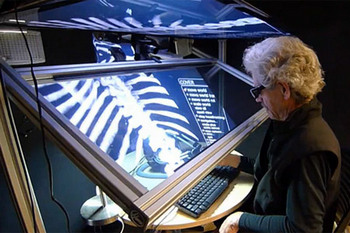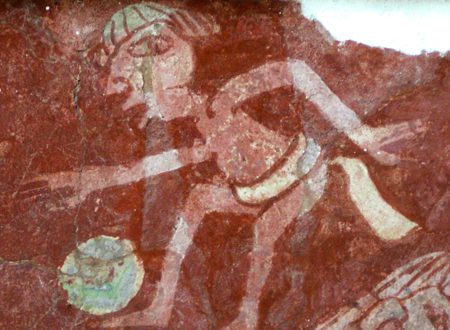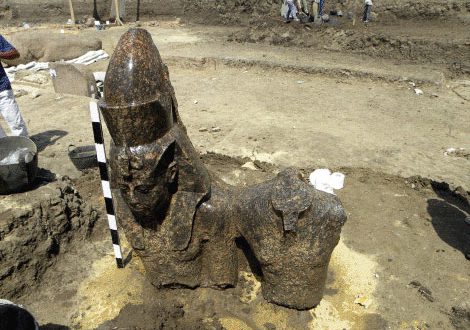 Archaeologists excavating at Taposiris Magna, 45 km west of Alexandria, have discovered a huge headless granite statue of an as yet unidentified Ptolemaic king, and the original gate to the temple one of fourteen temples said to contain a piece of the god Osiriss body.
Archaeologists excavating at Taposiris Magna, 45 km west of Alexandria, have discovered a huge headless granite statue of an as yet unidentified Ptolemaic king, and the original gate to the temple one of fourteen temples said to contain a piece of the god Osiriss body.
The monumental sculpture, which is a traditional image of an ancient Egyptian pharaoh wearing collar and kilt, could represent Ptolemy IV, the pharaoh who constructed the Taposiris Magna temple. In a statement issued by the SCA, Dr Zahi Hawass says that the statue is very well preserved and might be one of the most beautiful statues carved in the ancient Egyptian style.
The joint Egyptian-Dominican team working at Taposiris Magna discovered the temple’s original gate, located on its western side. In pharaonic Egypt the temple was named Per-Usir, meaning ‘A place of Osiris’. When the god Seth killed Osiris, he cut him into fourteen pieces and threw them all over Egypt. This temple (there are 13 more, spread over Upper and Lower Egypt) contained one piece of the god’s body.
Click the images for a larger version.
The team also found limestone foundation stones, which would once have lined the entrance to the temple. One of the foundations, explained Hawass, bears traces indicating that the entrance was lined with a series of Sphinx statues similar to those of the pharaonic era.
The team, led by Kathleen Martinez, began excavations in Taposiris Magna five years ago in an attempt to locate the tomb of the well-known lovers, Queen Cleopatra VII and Mark Antony. There is some evidence that suggests that Egypt’s last Queen might not be buried inside the tomb built beside her royal palace, which is now under the eastern harbour of Alexandria.
Dr Hawass has already hailed the dig as a success, whatever the outcome: If we discover the tomb… it will be the most important discovery of the 21st century. If we do not discover the tomb… we made major discoveries here, inside the temple and outside the temple.”
Dr Hawass pointed out that in the past five years the mission has discovered a collection of headless royal statues, which may have been subjected to destruction during the Byzantine and Christian eras. A collection of heads featuring Queen Cleopatra was also uncovered along with 24 metal coins bearing Cleopatras face.
Behind the temple, a necropolis was discovered, containing many Greco-Roman style mummies. Early investigations, said Dr Hawass, show that the mummies were buried with their faces turned towards the temple, which means it is likely the temple contained the burial of a significant royal personality, possibly Cleopatra VII.



